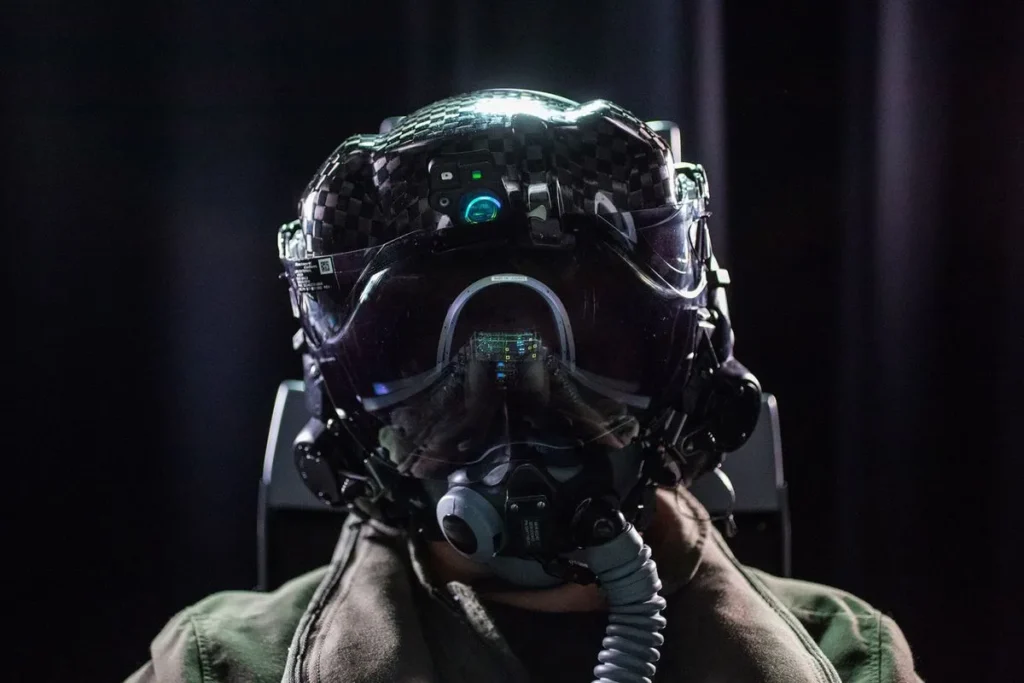
Pentagon Gets a Fix for F-35 Bug in $400,000 Pilot Helmets
The U.S. military may have finally found a way to fix a glitch with the world’s most high-tech helmet used by pilots flying the most expensive fighter jet in history.
A bug in the $400,000 helmet display screen used by F-35 aviators caused a green glow when flying in very low-light conditions and is now expected to be overcome by using a different type of semiconductor illumination.
The distracting green glow was deemed so critical that restrictions were imposed on some night landings on aircraft carriers, and the fault was classified as a “Priority One” fix by the Pentagon’s test office. Jittery lines were also visible to some pilots.
Defense giant Lockheed Martin Corp. has been contracted by the F-35 Joint Program Office for the redesign, modifying headpieces by installing new organic light-emitting diodes to replace traditional liquid crystal displays.
“In partnership with the F-35 Joint Program Office and our U.S. Navy customer, we’ve been working to transition the helmet technology from a traditional LCD to an Organic LED system,” Program Manager Jim Gigliotti said by email. Lockheed Martin did not provide a figure for the number of helmets requiring modification or the upgrade cost.

An F-35B prepares for launch from the flight deck of the amphibious assault ship USS America.
OLED technology can provide a number of manufacturing and user benefits over older LCD alternatives, including the use of flexible screens, improved picture quality and quick response times, and are used in flat-panel TVs, smartphones and digital wristwatches. OLED benefits, however, may come at the cost of shorter screen lifespans.
The contract announcement for new helmet displays comes just days before a joint hearing of House Armed Services Committee panels into the troubled $406 billion F-35 programs, the most expensive weapon project in history.
The project has been plagued by problems during its two-decade development phase. Last year, the Government Accountability Office said the project had 966 outstanding glitches, with more than 150 not expected to be resolved before full-rate production.
And the stealthy jet is still months away from the completion of rigorous combat testing against potential adversaries’ defense systems. Nevertheless, the Pentagon is confident in the aircraft’s abilities. A $34 billion follow-on award was made last month for 478 more fighters, taking the existing production count toward 1,000 planes — out of a planned total of at least 3,100.
The F-35 is available in three variants and is used by the Air Force, Navy and Marine Corps. More than 10 countries have committed to buy the airplane, including Japan, South Korea, Britain, Israel, Australia, and the Netherlands.
The state-of-the-art helmets are made as part of a joint venture by Rockwell Collins Inc. and Elbit Systems of America. The shells combine Kevlar and carbon fiber, and custom-made to snugly fit the cranial contours of each pilot. Replacements can be made using a database of head measurements kept for each pilot.
One high-tech feature of the helmet display is an ability for a pilot to see video imagery of where they will land simply by looking down during vertical descent. Weapon lock-on can be achieved by looking at targets through the helmets.
“We’re in the process of developing, improving and fielding the new system and the feedback from users has been extremely positive,” Gigliotti said. The pilots are “excited to get this new equipment.”

